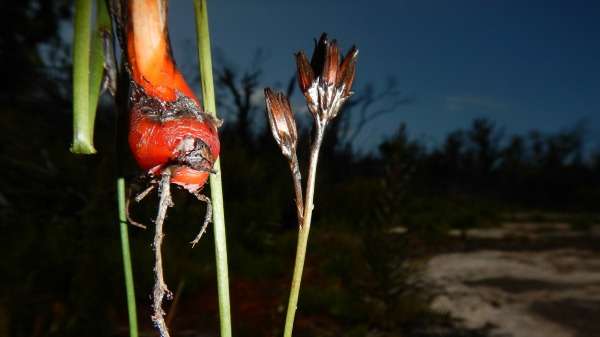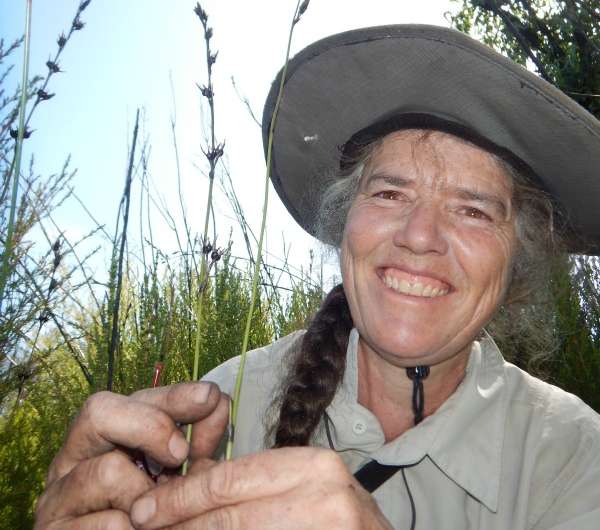South-west bushfire turns up new flora

Biodiversity has flourished amid the devastation left by a bushfire that tore through a section of the south-west last year, with an Albany botanist discovering a plant species in the region.
Libby Sandiford found the species of the Haemodorum genus in a burnt creek line near Northcliffe on December 1.
"The area has been really well surveyed so to still find new things is pretty amazing really," she says.
The plant is thought to have escaped detection until now because its habitat was difficult to access before fire thinned out the vegetation, and possibly because the Haemodorum only flowers after fire.
The name Haemodorum is derived from the Greek words for blood and gift, with the various species commonly known as bloodroots.
Bloodroots have black, stick-like flowering stems, which act as camouflage against grazing animals, and edible, red bulbs that can grow to the size of a tennis ball.
The new plant will be named after Ms Sandiford, with the process expected to take up to a few years.
Ms Sandiford, along with Bremer Bay landscape ecologist Nathan McQuoid and UWA Albany School of Plant Biology Winthrop Professor Stephen Hopper were exploring the area to try and find rare plants that emerge after bushfires.

The trio plan to return to the area near Northcliffe this month to conduct a more thorough survey and collect seed and DNA material.
There are up to 30 species of Haemodorum found across Australia, but Prof Hopper says it has been nearly 30 years since botanists named a new species from the South West.
Prof Hopper says other Haemodorum species have demonstrated antibacterial and antiviral properties.
"Some members of the genus have been tested by medical companies…and shown they inhibit the growth of bacteria and viruses," he says.
"For this particular species, we don't know yet but it opens up those sort of research opportunities, which I think is fantastic."
About 50 plants are known to exist at two locations east of Northcliffe, Prof Hopper says, but exploring similar habitat elsewhere may reveal more populations.
Albany botanical artist Ellen Hickman is producing illustrations from some of the newly discovered specimens as part of her 15-year research project with Prof Hopper on the Haemodoraceae family.
Her three-year PhD research project on discovery through minutely detailed botanical illustration compared with DNA sequencing studies by Prof Hopper and his colleagues is planned to be submitted to scientific journals for publication.
Provided by Science Network WA
This article first appeared on ScienceNetwork Western Australia a science news website based at Scitech.





















